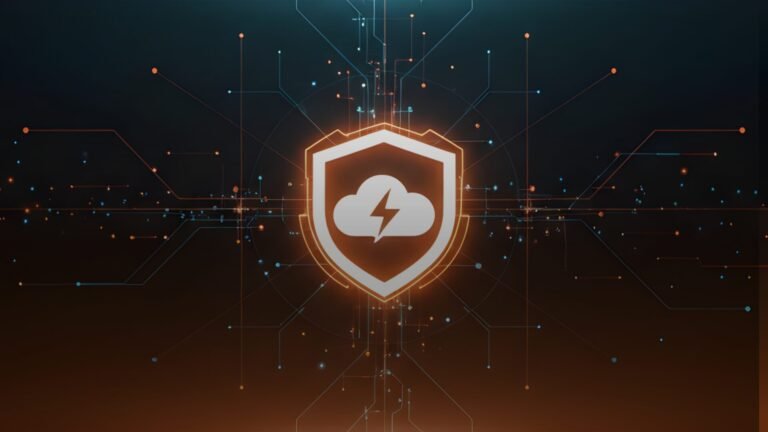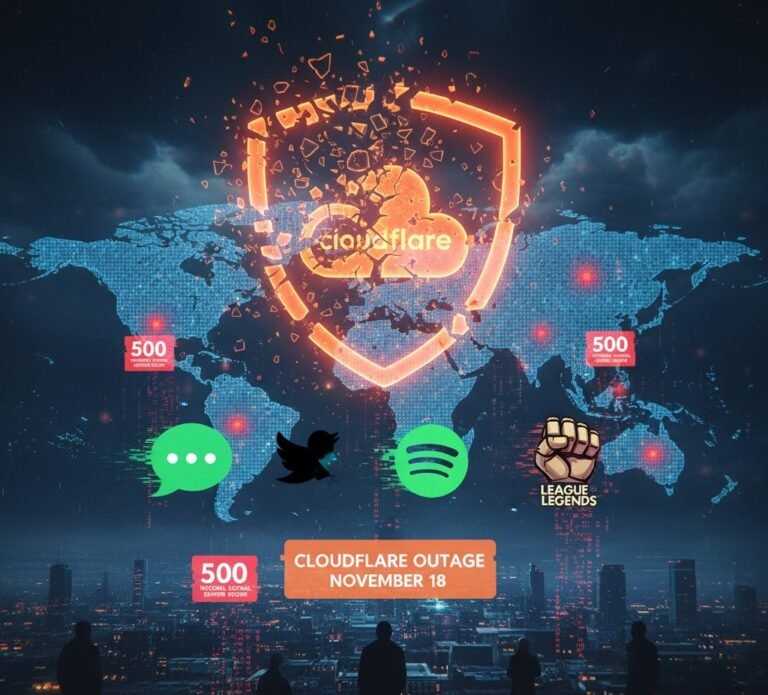On the morning of June 17, 2024, millions of people opened their browsers expecting everything to work as usual. Instead, they ran into strange error pages on ChatGPT, Discord, Shopify stores, news sites, and even betting platforms like Bet365. The messages looked different on each site, but the core problem was the same: Cloudflare, the company that quietly keeps a huge part of the internet safe and fast, was having a very bad day.
If you saw any of these messages, you probably felt confused or even a little worried:
- “Please unblock challenges.cloudflare.com to proceed” (ChatGPT)
- “Attention Required! | Cloudflare” – “Sorry, you have been blocked”
- “One more step… Please complete the security check”
- Error 500, 502, 503, or 504 pages that just wouldn’t go away
Here’s the good news: you didn’t do anything wrong. Your computer is not infected, your IP address is not blacklisted forever, and you don’t need to “unblock” anything on your side. The problem was 100% on Cloudflare’s end, and they fixed it within a few hours (full service was restored by around 11:30 AM UTC).
But outages like this keep happening — this was the third major Cloudflare incident in just over a year — so it’s worth understanding what actually went wrong and how you can protect yourself (or your business) next time.
What Does Cloudflare Actually Do?
Cloudflare sits between visitors and the real web server of a website. Think of it as a very smart bouncer at a nightclub:
- It stops robots and hackers (DDoS protection)
- It speeds up page loading by storing copies of images and files closer to you (CDN)
- It blocks suspicious traffic before it reaches the main server (WAF – Web Application Firewall)
- It hides the real server address so attackers can’t hit it directly
More than 20% of all websites use Cloudflare, including big names like:
- OpenAI (ChatGPT)
- Discord
- Medium
- Shopify stores
- Canva
- NordVPN
- Many government and banking sites
When Cloudflare has a problem, all of those sites feel it at once.
What Caused the June 17 Outage?
Cloudflare posted an official update on their status page (status.cloudflare.com) at 07:38 UTC saying they were “investigating widespread issues with Cloudflare services”. By 09:15 UTC they identified the root cause: a bug in a recent code change that was pushed globally and affected three data centers at the same time.
In simple terms: someone at Cloudflare pushed new code that contained a mistake. Because of how their system works, that mistake spread instantly across the planet instead of staying in one region. Normal users started failing the “security checks” that Cloudflare runs in the background, so the system thought everyone was a bot and blocked them.
They rolled back the bad code and everything returned to normal by 11:30 UTC.
Source: Cloudflare official incident report – June 17, 2024
Why Did the Error Messages Sound So Scary?
The messages are written to stop real attackers. When everything works normally, only bots and bad actors see them. On June 17, normal people saw them because Cloudflare itself was broken.
That’s why you got a message that said “you have been blocked” even though you were just trying to ask ChatGPT a simple question.
How Often Does This Happen?
Cloudflare is usually very reliable, but big outages do happen:
- June 17, 2024 – global outage caused by bad code deployment
- July 12, 2023 – another global outage (also code-related)
- June 21, 2022 – 19 data centers went down because of a network change
These events are rare, but when they happen, the impact is massive because so many sites depend on one company.
What Should You Do When You See These Errors?
- Wait 5–15 minutes and refresh the page. Most Cloudflare issues fix themselves quickly.
- Try a different network (switch from Wi-Fi to mobile data or use a VPN temporarily).
- Clear your browser cache and cookies (sometimes helps).
- Check status.cloudflare.com or downforeveryoneorjustme.com to see if it’s a global problem.
- Don’t click any “verify you’re human” links that look suspicious — during real outages scammers sometimes create fake pages.
Most important: do nothing drastic. Don’t factory reset your router, don’t pay anyone to “unblock your IP”, and don’t panic.
How Businesses Can Reduce Risk (So You’re Not 100% Dependent on Cloudflare)
If you run a website or online store, here are practical steps you can take today:
- Use Multi-CDN setup
Route traffic through two providers (Cloudflare + Fastly, or Cloudflare + AWS CloudFront). If one goes down, the other takes over automatically. - Enable “Always Use HTTPS” and “Automatic HTTPS Rewrites” in Cloudflare — these settings stay active even during outages.
- Set up a fallback “Sorry” page on your own server (not through Cloudflare) so visitors at least see your branding instead of a scary error.
- Use a secondary DNS provider (many people use Cloudflare DNS — switch at least some records to Google, Route 53, or FluteByte DNS).
- Monitor your site with an external tool (UptimeRobot, Pingdom, or FluteByte Monitoring) that alerts you the moment visitors can’t reach you.
Final Thoughts
The June 17 Cloudflare outage reminded everyone how much of the internet runs on just a handful of companies. When one of them trips, millions of people feel it within seconds.
The fix for regular users is simple: wait it out. The fix for business owners is a bit more work — but putting a few safeguards in place now means you won’t lose sales the next time something like this happens.
At FluteByte Technologies, we help online businesses stay up even when big providers fail. We offer multi-CDN setups, 24/7 monitoring, fallback pages, and fast DNS solutions that keep your site reachable no matter what.
Ready to make sure your website never shows a scary Cloudflare error again?
Drop us a message at https://flutebyte.com/contact or email hello@flutebyte.com and we’ll audit your current setup for free.
Frequently Asked Questions (FAQ)
- Will I be permanently blocked after seeing that message?
No. Once Cloudflare fixed the issue, all blocks were automatically lifted. Your IP is fine. - Should I turn off my VPN when Cloudflare is down?
Sometimes yes. Certain VPN servers get temporarily rate-limited during outages. Switching servers or turning it off for a few minutes can help. - Is ChatGPT still safe to use after this?
Yes. The problem was Cloudflare, not OpenAI’s servers. ChatGPT itself was never hacked or compromised. - How do I know if a site is down because of Cloudflare or something else?
Visit status.cloudflare.com. If they show “incident” or “degraded performance”, that’s the reason. - Can I run my website without Cloudflare at all?
Yes, many sites do. You’ll lose the free DDoS protection and speed boost, but you gain independence. We can help you migrate smoothly if you decide to leave Cloudflare behind.




